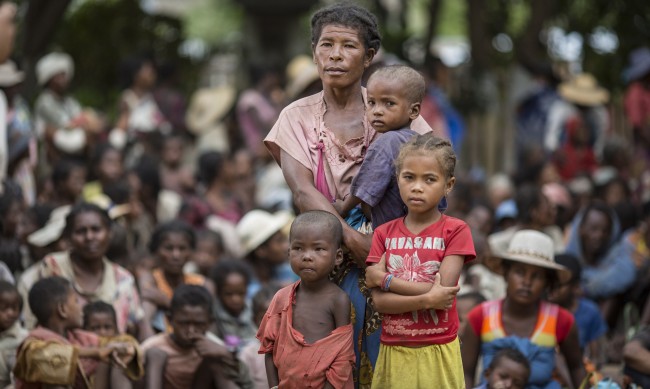They have already eaten everything that is edible. They ate locusts and cockroaches, they ate grass, noise and mud. There is a mass famine in Madagascar. People there have not contributed anything to climate change, but are paying the highest price, Deutsche Welle reports.
Madagascar is proving to be one of the biggest victims of climate change: for years, there has been almost no rain in the country’s southern regions, and prolonged droughts are already threatening the physical survival of people in those places.
And you can’t see a leaf
In Betanti in southern Madagascar, where the land meets the sea, there is almost no greenery left. “We are already afraid to live here, many people are leaving this place. They fear that the dunes will grow. There is nothing we can do here anymore, “said local resident Henri Claude.
It has never been so bad
A little further north is the village of Tsiombe. And it falls into a poor region where many people are starving. There are still trees there, but they are constantly thinning. People cut them for wood, which they use for fire or for the production of charcoal, which they sell. They know they are destroying natural resources, but they are completely helpless. “We have nothing to eat or drink. “We are forced to cut down trees because of kere,” said one local. “Kere in the local dialect means hunger. People in this region are used to the difficulties, but they don’t remember it ever being so bad.”
“It’s all about the baby, the rest we won’t eat”
Massi Celestinea is approaching fifty. The woman collects cactus flowers – and says she just can’t wait for the bitter fruits to ripen. “It simply came to our notice then. That’s all we have in the village. It hasn’t rained in five years. People were left without cattle, they were forced to sell it. Look at the harvest we just have – and you can’t see a leaf. The consequences of the drought are clear here. There are only winds that carry sand in the air. “
People have already eaten everything that can be eaten. They ate locusts and cockroaches, they ate grass, noise and mud. Whoever is lucky finds some vegetables or some rice. But this is not enough to feed people. “Today I will have to pay half of my daily wage for some water and the other half for rice. It’s all about the baby, the rest of the family won’t eat,” said one saleswoman.
Eat once every three days
Many people in southern Madagascar eat only once every three days. Humanitarian organizations work on the ground to help. But even the staff of the World Food Program at the UN cannot be everywhere.
“Food prices are exploding because the harvest is very low. People do not have enough food, nor do they have the money to buy food. Malnutrition is growing. These people have not contributed anything to climate change, but they are probably paying the most. the high price, ”says Arduini Mangoni of the World Food Program.
More than 1 million people are already starving in Madagascar. The United Nations warns that by the end of the year their number could double.









